Inside the Envelope: LAPD Brass and the Black Dahlia Cover-Up (Part 3 of 3)
September 28, 2025
Birch Bay, Washington
For those of you that have not read Blog 1 and 2 of this 3 part series I would highly recommend you read those prior to reading this Part 3. The links are:
Blog 1 link: HERE.
Blog 2- link: HERE
(Part 3 of 3)
By the 1960s and 70s, LAPD brass had already quietly declared the case solved, but you won’t find that in their official files. Instead, it’s buried in whispers, memos, and envelopes passed behind closed doors. Fifty years later, those same angles are still visible — if you know how to line them up.
And that brings us to the envelope. In Part 3 of this series, we step inside the LAPD brass files, open what was hidden, and follow the trail that shows not just who knew the truth, but why it was buried.
The Envelope

X marks the 1950 approximate location of LAPDs covert office at 411 E. 1st St.
In July 1949, Capt. Charles Stanley was appointed to head LAPD’s Personnel Division. His new office
was located at 411 East First Street — just two doors down from the First Street Clinic, where Dr.
George Hodel in his own words on the Hodel/Black Dahlia DA Bugging recordings would confirm that
throughout the 1940s he performed abortions; “lots of them.”
 As far as we know, Capt. Stanley himself had no known ties to George Hodel. It appears his connection
As far as we know, Capt. Stanley himself had no known ties to George Hodel. It appears his connection
comes through circumstance: his new post placed him inside the office that would soon receive some
of the most sensitive evidence in the Black Dahlia investigation.
By fall 1950, Capt. Stanley was barely a year into his role at Personnel when a sealed LAPD
Inter-Department Mail envelope landed on his desk.
This wasn’t routine correspondence. It was routed through command channels, hand-carried across
divisions, and marked for the eyes of select brass. The same Personnel Division office that had been
drawn into the Brenda Allen vice scandal just a year earlier was now handling materials tied directly to
the Dahlia case.

LAPD Inter-Department Envelope (Rev. 7/50)
The original envelope now in my custody thanks to Sgt. Harry Hansen’s granddaughter, Judy May,
allows us to track its passage through LAPD’s inter-department couriers and shows us where and to
whom the contents were sent. From Patrol (likely the Commander) Georgia Street, to Capt. McCauley,
University Division, to Dep. Chief Thad F. Brown, Commander of Detectives, to Capt. B.R. Caldwell,
City Hall, to Capt. Charles Stanley at his office next to George Hodel’s clinic, to Capt. Zink, Highland
Park Division, To Dep.Chief R. Murdock, Commander Patrol Division, to the Commander of Hollywood
Division—Eight Top LAPD Commanders, “The Brass”, the final recipeient, the lead detective on the
Black Dahlia investigation, Sgt. Harry Hansen, Homicide Division, who would take and keep the
contents at his home to be found fifty-three years later and handed over to me for my investigation.
The Envelope Opens
 When Capt. Stanley opened the envelope in his First Street office — “two doors down” from Hodel’s
When Capt. Stanley opened the envelope in his First Street office — “two doors down” from Hodel’s
clinic — he found Black Dahlia crime scene and autopsy photographs. These were circulated not only
to Stanley but to eight other command officers of the LAPD, three and a half years after Elizabeth
Short’s murder.
The path of the envelope is traceable, but its contents raise even deeper questions.
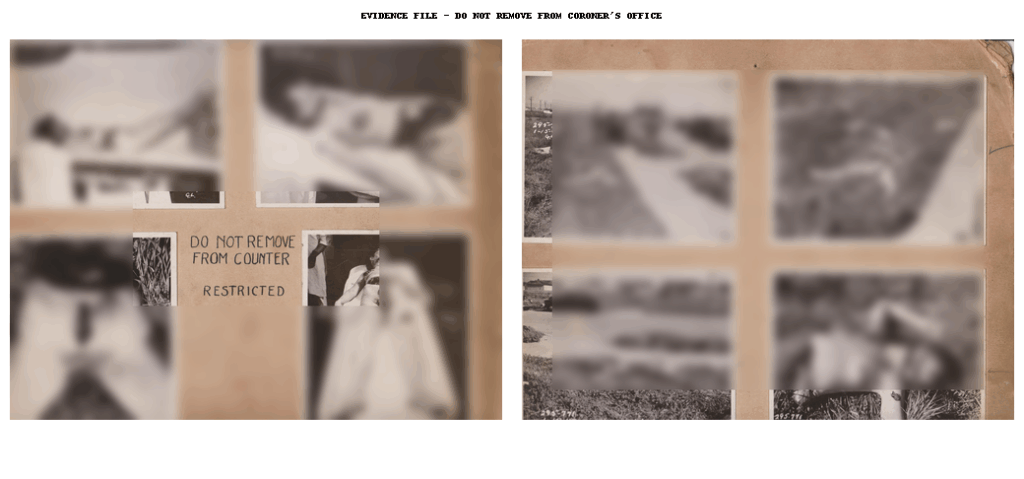
“Do Not Remove From Counter- Restricted”
We ask the obvious question—Why?
In the summer of 1950:
George Hodel had sold his Sowden Avenue mansion and was weeks away from fleeing the country.
Just months after the DA/LAPD surveillance team had completed the bugging of the Hodel residence and obtained confessions to his murdering his secretary, Ruth Spaulding, in 1945 and confessing to the Black Dahlia murder in 1947. Also his admitting “to having performed abortions at his clinic and making police payoffs.”Lt Frank Jemison of the District Attorney’s Office was preparing to obtain a felony complaint against George Hodel for Short’s murder then immediately pulled of the case.
All his evidence and the surveillance recordings were ordered by DA Chief Investigator H. Leo Stanley (Lt. Jemison’s superior) to be turned over to LAPD Chief of Detectives Thad F. Brown. From there, they vanished.

“The district attorney added his aid will coninue with his inquiry “until he thinks he has sufficient evidence against a party or parties, and then will ask for formal murder complaints.”
A City of Scandal
The backdrop of 1949–1950 Los Angeles was a city that looked more like a noir film than a functioning justice system.
Brenda Allen Vice Scandal (1949): LAPD’s Admin Vice Division was caught taking huge payoffs fromAllen’s prostitution ring. Capt. Cecil Wisdom, Chief of Personnel Division was personally interviewing witnesses behind locked doors at 3:30 a.m. in June 1949.

Leadership Change: By July, Wisdom was replaced by Capt. Charles Stanley.
Public Outcry: On June 15, 1949, the Los Angeles Mirror declared that “vice and corruption were
rampant in the Los Angeles Police Department” and condemned the DA’s indifference.
Los Angeles Mirror newspaper July 15, 1949
Just two days prior to the above article appearing George Hodel committed the kidnap/sexual assault murder of victim Louise Springer and LAPD paid undercover informant Glenn Martin informed the Department’s Intelligence Unit that “GH and I were friends of Louise Springer, and he killed her and the Black Dahlia.” Both Hodel and Martin were taken in and interrogated in secret by LAPD detectives from the Intelligence Unit but in Martin’s words, “GH was released because the detectives were his “friendlies.”
Personnel wasn’t just a back-office assignment. It was a sensitive operations hub. And now, in 1950, it
was the office through which Dahlia evidence was being funneled.This was Los Angeles as a real-life L.A. Confidential — with George Hodel, his clinic, and his connections only blocks away from “Chinatown.”
As we now know, Lt. Jemison was preparing to obtain multiple felony complaints against George Hodel when the brakes were slammed. Lt. Jemison was ordered off the case and every piece of evidence, including the Dahlia phtos and bugging tapes was handed over to Chief of Detectives, Thad F. Brown. Once in his hands the recordings and transcripts, “disappeared.”
For over half a century, George Hodel’s name was absent from every LAPD report. Nothing in the LAPD Black Dahlia files remained identifying him. The extensive recordings and six-weeks of surveillance with his admissions-ALL GONE. Only DA Lt. Jemison’s “second set of books” hidden in the DA’s vault kept the truth alive. Without that foresight, Hodel’s name would never have been reconnected to Elizabeth Short and the case would have remained officially unsolved.
And yet, to this day, the case remains officially “unsolved.” For LAPD to acknowledge the truth would mean admitting that some of its most respected leaders were complicit in a cover-up.

This was Los Angeles as a real-life L.A. Confidential — with George Hodel, his clinic, and his connections only blocks away from ‘Chinatown.’
The difference, of course, is that this wasn’t fiction. It was Los Angeles in 1950.
“The cover-up lasted decades. The evidence survived. Now, for the first time in one volume, you can read it all — Black Dahlia Avenger: Case Closed is available to preorder.”
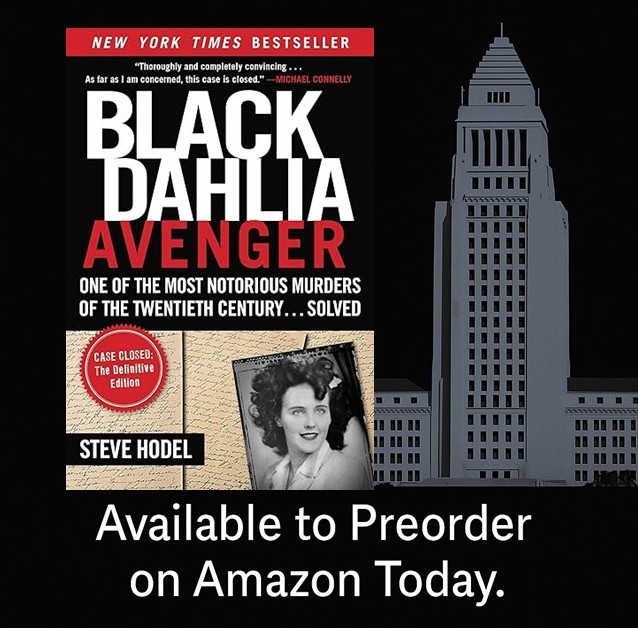
CLICK HERE TO ORDER –
BLACK DAHLA AVENGER-CASE CLOSED-
THE DEFINITIVE EDITION (2025)
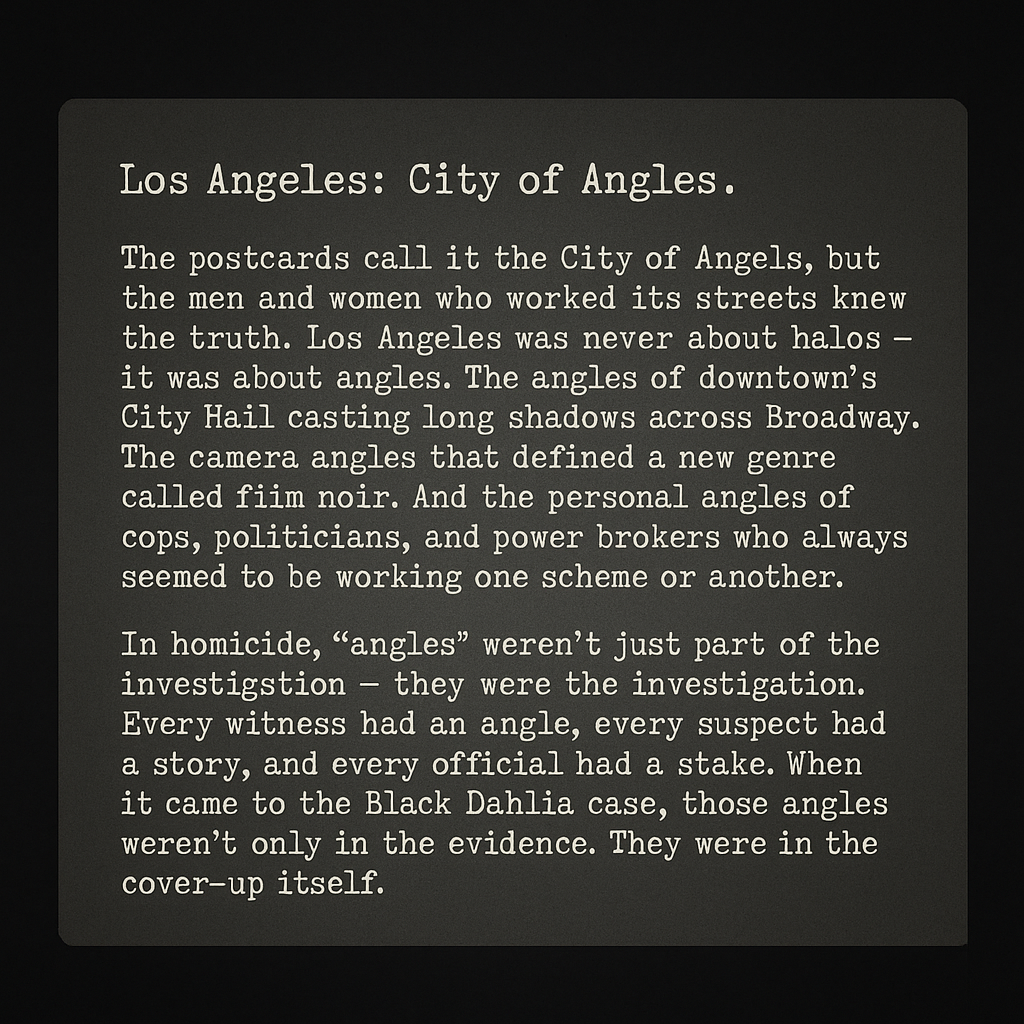
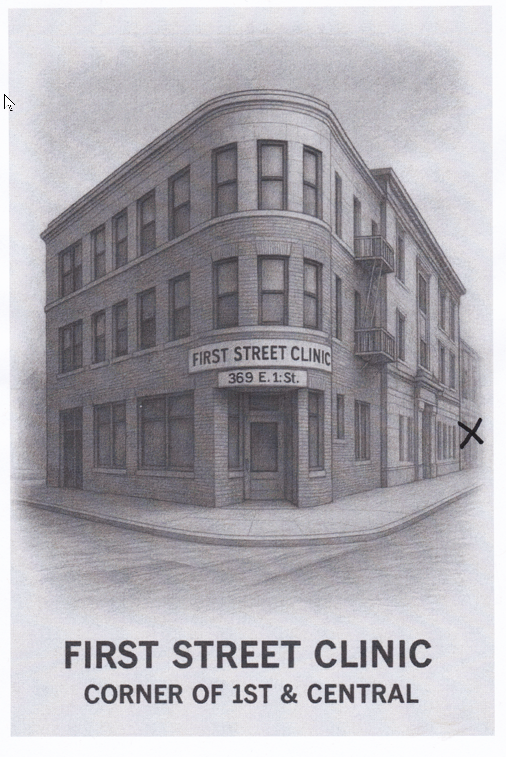
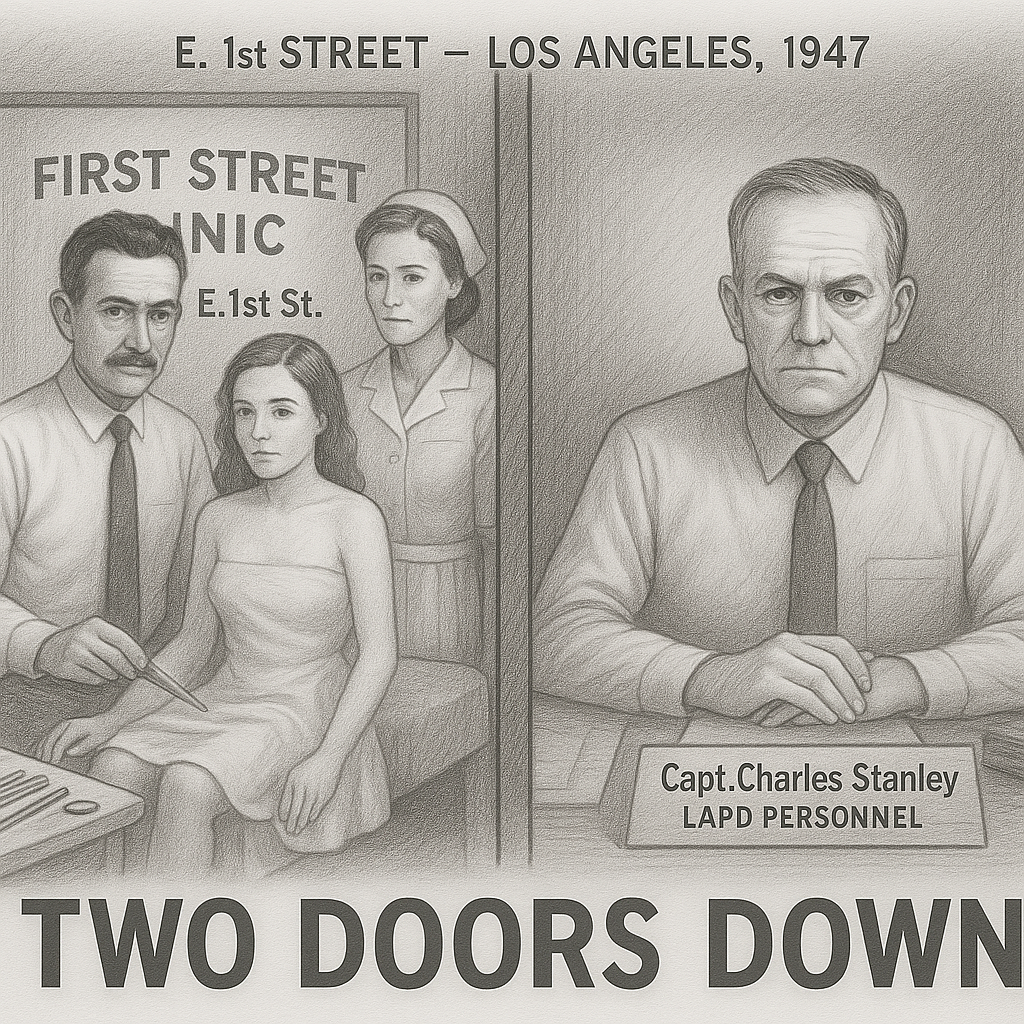 As far as we know, Capt. Stanley himself had no known ties to George Hodel. It appears his connection
As far as we know, Capt. Stanley himself had no known ties to George Hodel. It appears his connection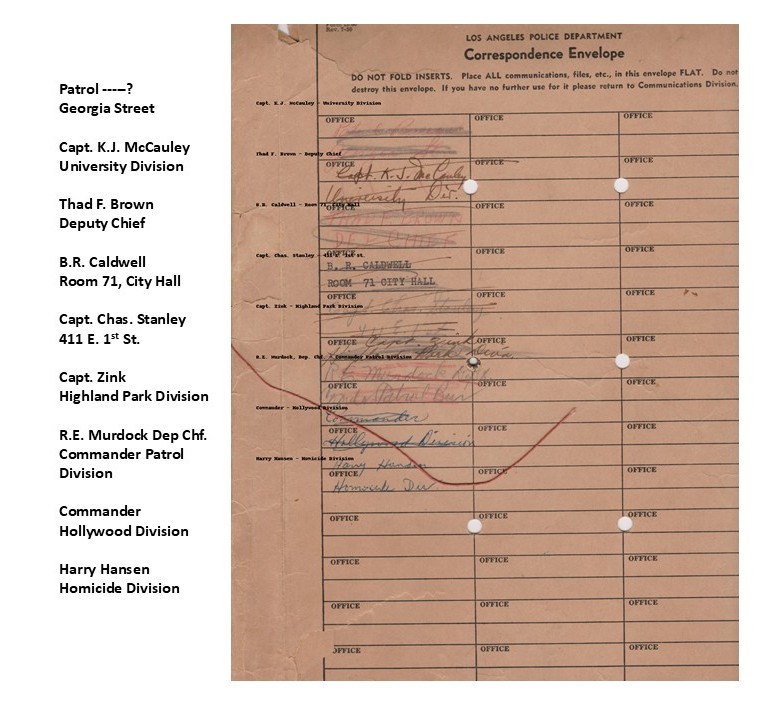
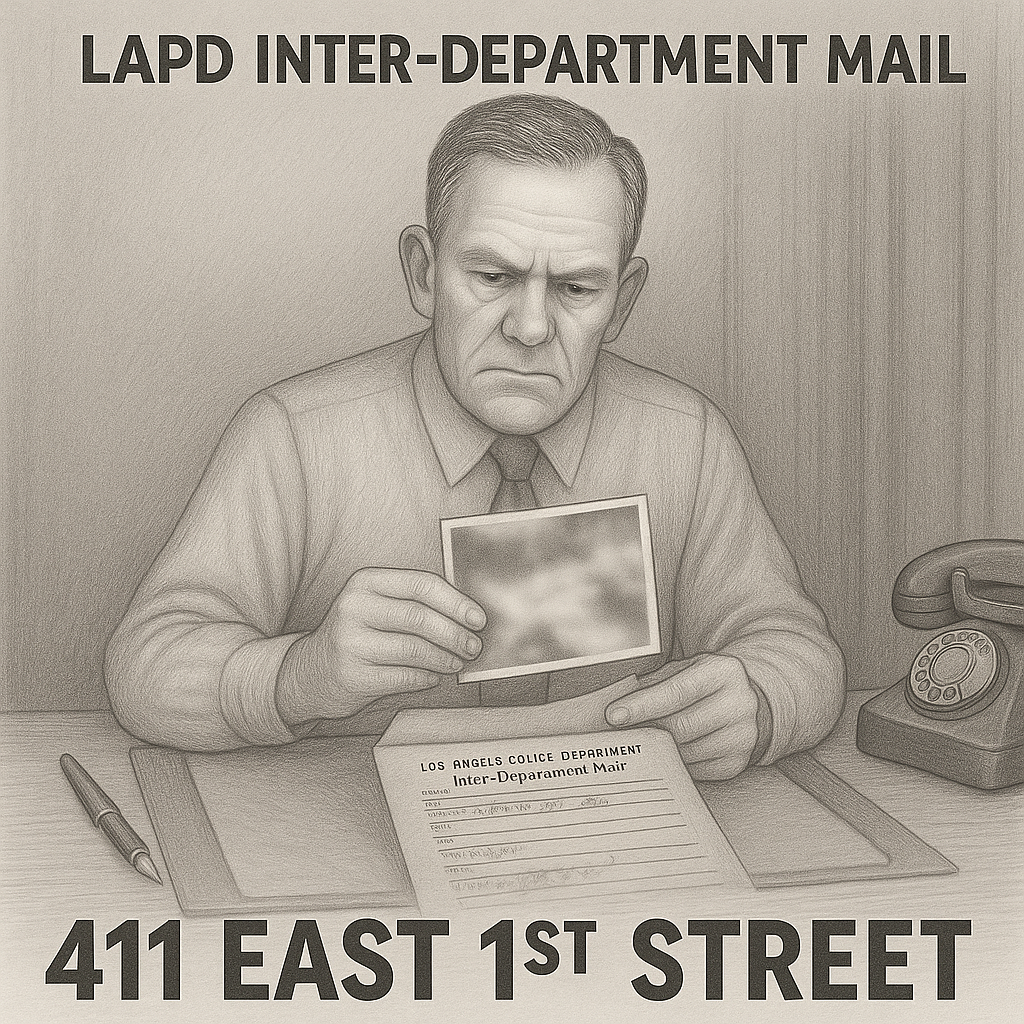 When Capt. Stanley opened the envelope in his First Street office — “two doors down” from Hodel’s
When Capt. Stanley opened the envelope in his First Street office — “two doors down” from Hodel’s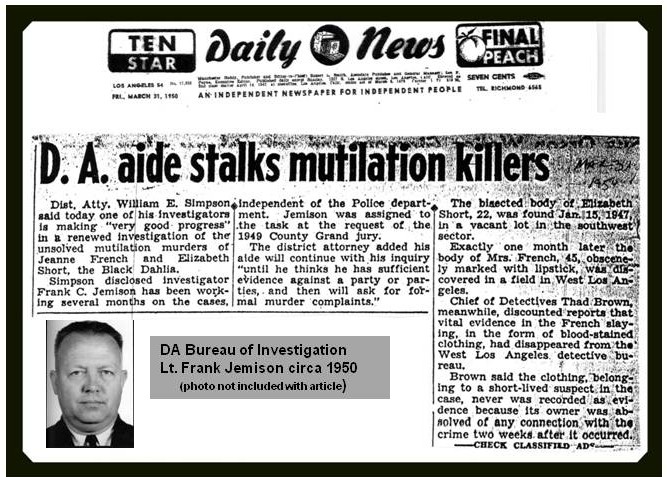
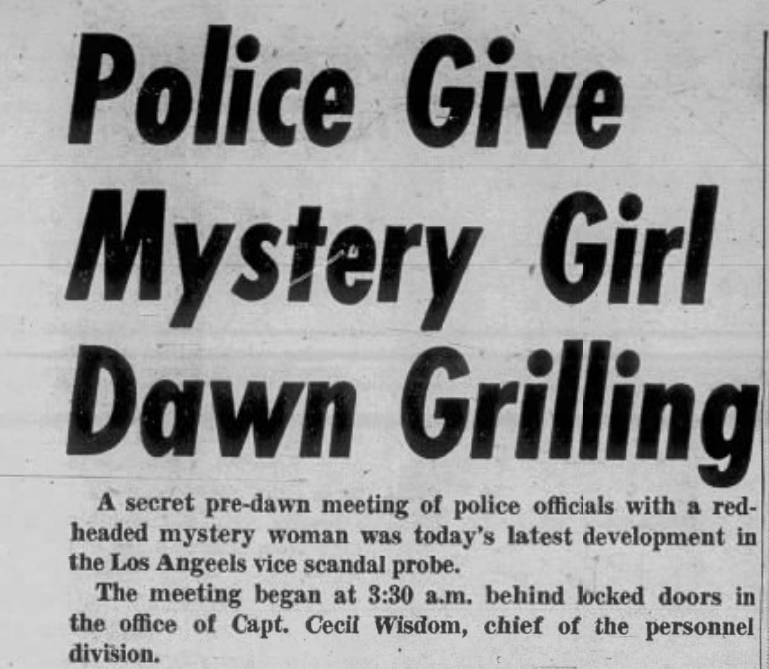


Another excellent piece for enclosure in your new book on the case. More pieces to the Mosaic.
Dennis E:
Too late to include in the BDA update as its already printed and at distribution to be out in three weeks. Wish I had discovered this “new clew” in time, but, as you know, there is a lot of evidence in my sixteen years of blogs on this “new” site that haven’t been in print too.
I can’t wait to read this conclusion to the infamous Black Dahlia case. Thanks to your tireless efforts, one of the world’s most notorious murders has been definitively solved.
Each new piece of evidence throws more light onto the case and its aftermath showing that the LAPD was extremely lax and even corrupt (though I do not like to use that word in relation to the police) to the point of letting GHH go. How things proceed from here is anyone’s guess. Organizations such as the LAPD do not like to admit they were/are wrong as it casts aspersions on current officers and the people who work for them.
I do not think any other writer would be capable of penning such a thorough and deep investigation as you have. It should be a landmark in true crime writing and how to properly investigate decades-old cold cases. Indeed, I believe your BDA books have raised the bar for all true crime books to come.
Ron R:
Thanks for the kind words Ron. Much appreciated.
I understand your hesitancy to applying “corrupt” to Law Enforcement since it is the antithesis of “To Protect and Serve”. I too was hesitant. Especially hard for me as I it was my Department. A Department I loved and still love and believe in. But, this is Old Old School. 1920s-1950s. Most police departments across the nation had some degree of corruption. The larger city the more corruption generally speaking. In regards to the updated BDA -Case Closed I have taken materials post 2015 (when Skyhorse/Arcade published BDA) and added them to the book so rather than having to read three books on the Dahlia investigation most of the important linkage can be found in one book. Also, new linkage discovered in very recent months. Best Regards, Steve
Det Hodel, I Recently watched a 2020 documentary entitled titled “On the French Riviera with Man Ray and Picasso.” With the relationship between your dad and Man Ray and your later research on Man Ray,I thought if you’d not seen it that maybe you’d find it interesting. It covers Man and Picasso and other writers n artist friends as they all spent the summer of 1939 on the French Coast together. There’s no mention or connection to Elisabeth’ Short case. Although it does give a lot of background info on Man Ray. You also get some sense of him as he interacts with his friends in a relaxed and intimate setting.. Many of his photos and film are shown as well as several selections from his journals are read in the narration. If you’ve seen it? My apologies, if not? I highly recommend it.
I found it quite entertaining, it really held my interest. Maybe something in it will catch your attention, spark a notion? never can tell. Take care